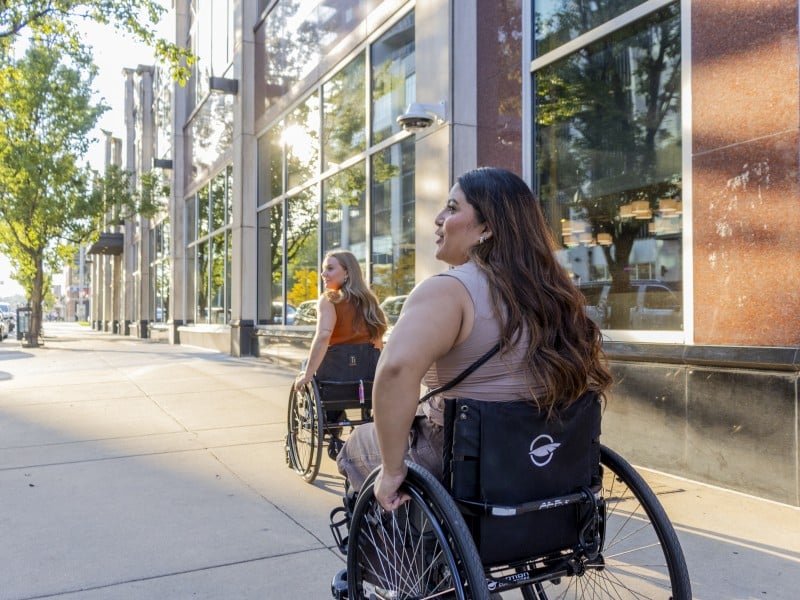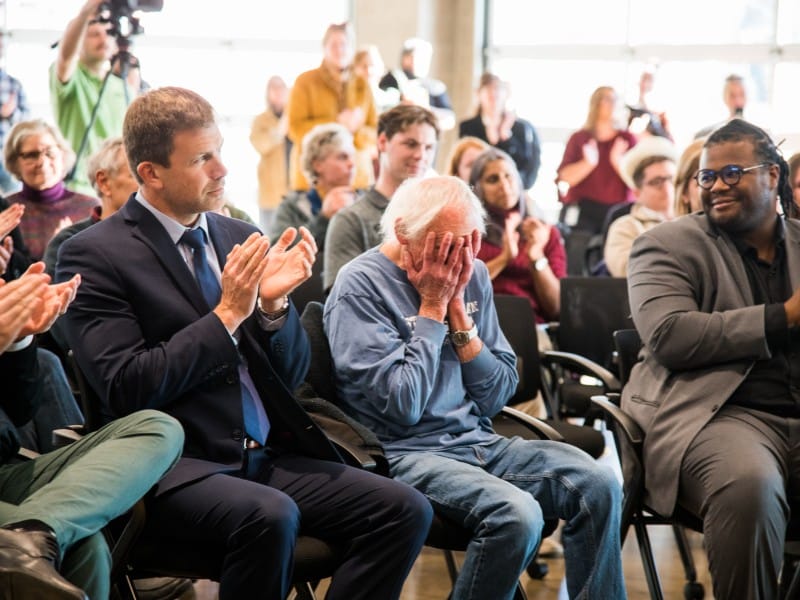Editor’s Note: This story was reported by Anas Elkafrawy and the accompanying artwork and photos were created by Gloria Geer (Gus) and Plamedie Ekumbaki as part of the Fall 2023 Kalamazoo Voices of Youth Program. The program is a collaboration between Southwest Michigan Second Wave and KYD Network in partnership with the YMCA of Greater Kalamazoo, funded by the Stryker Johnston Foundation. The Voices of Youth Program is led by Earlene McMichael. VOY Mentors were Al Jones (writing), Casey Grooten (art), and Taylor Scamehorn (art).
There are two bathrooms for boys on the third floor of Kalamazoo Central High School.
There are four on the second floor. But on a busy school day recently, all six of them were locked.
There are two boys’ bathrooms on the first floor. Only one of them was locked that day. That bathroom is usually pretty clean and there’s rarely anybody in there, students say. They say that’s different from the bathrooms on the other floors where there are lots of kids, and some of them are smoking — usually vape pens, sometimes marijuana.
Closing some bathrooms is a strategy some schools use to try to stop anything shady from happening inside. School officials say that means most students have to suffer because of some others. But despite efforts by administrators, students continue to be exposed to smoke — usually vaping and marijuana — in school bathrooms.

Kalamazoo Central Principal Valerie Boggan has said she and the rest of the school district are working to find a good solution. In a recent email to a student, she says, “We are working with Campus Safety to lock and unlock all the bathrooms to prevent destruction and vaping.”
Some students from other Kalamazoo County schools, who say they aren’t exposed to marijuana and smoking at home or in most other places, say school is where they come in contact with it.
Evan Therkildsen, 16, of Loy Norrix High School in Kalamazoo, says he doesn’t have regular exposure to marijuana and vaping, except in school.
“I don’t (have regular exposure). But, if I go into the bathrooms, it’s not too uncommon to see people with that stuff,” he says. “It’s almost being forced on you because I walk in and I instantly smell stuff.”
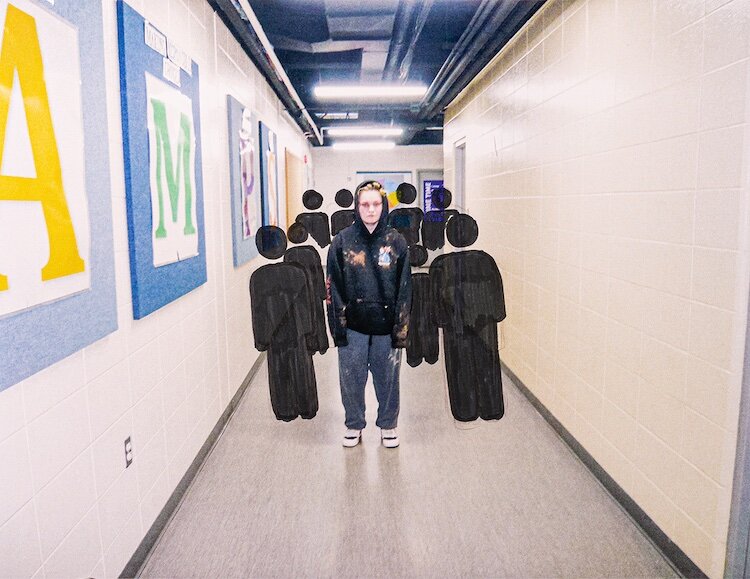
Is he worried about that? Therkildsen says, “You know how secondhand smoking is, like it’s affecting me in some way. Like maybe it gets into my lungs and it starts making me feel like I need some or something like that.”
Mekhi Burton, 15, says he doesn’t have much exposure to marijuana or vaping. But when he does, it’s usually in a bathroom at school. He is a sophomore at Schoolcraft High School.
He says that’s a regular thing although there are rules against it. He says it doesn’t bother him much although he has heard it’s bad for young people’s growth. And of vaping, he says, “The stuff in it can mess you up.”
His cousin, Isaiah Burton, who is a 16-year-old student at Loy Norrix, says he is not exposed to marijuana. But he says he thinks it will harm your lungs and “I heard that your memory, you can lose memory.”
Long-term harm?
Dr. Kathy Jackson, a pediatrician at the Family Health Center in Kalamazoo, says students who are in a smoky environment for five to 10 minutes once a day, should not suffer any major health problems from secondhand marijuana or vaping.
“You’re still going to be OK,” Jackson says. “The bigger piece is — as long as you’re not going to veer down the path of using it.”

The bigger concern, she says, is to make sure young people don’t start using marijuana or vaping nicotine. She says peer pressure plays a role in how young people start smoking marijuana or vaping.
“For most kids that start out using this,” Jackson says, “someone will say, ‘Hey try this.’ Or someone feels that they’re under so much stress. So they try it and say it takes the edge off. But there are always more healthy ways to do that, right?”
She says our bodies are not meant to ingest foreign substances, “whether it’s the smoke, whether it’s the edibles, (or) whether it’s pills that kids are taking. So we have to be careful in that regard.”
Dr. Joseph Fakhoury, a pediatric hospitalist at Bronson HealthCare in Kalamazoo, says doctors know a lot about nicotine smoke from cigarettes. But they don’t know a lot about the effects of the chemicals people get from vaping and other smoke.
“We know a lot about nicotine smoke from cigarettes directly,” Fakhoury says. “We’re doing a lot of learning about smoke ingestion (and) second-hand smoke from a vape — whether it’s nicotine or THC, or some other vape liquid if you will.”
Should young people be worried about secondhand smoke?
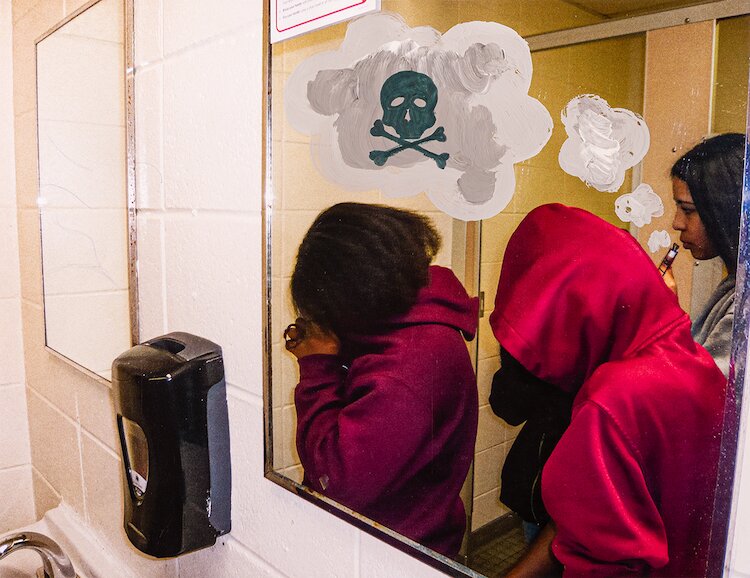
“Generally, yes,” he says. “People should be concerned about the level of secondhand smoke they receive from any of those, whether it be a cigarette or a vape pen.”
What is the potential harmful effect?
“That’s a great question,” Fakhoury says. “I don’t know if we know how much is too much because e-cigarettes and vape pens are very new. So we are learning about them every day.”
What’s a school to do?
Eric Alburtus, principal of Portage Central High School, says his staff tries to prevent students from smoking on campus by having good relationships with them. A lot of it is being present, he says.
“It’s me walking to the (student) bathrooms to wash my hands and use the bathroom rather than using the staff one,” Alburtus says.
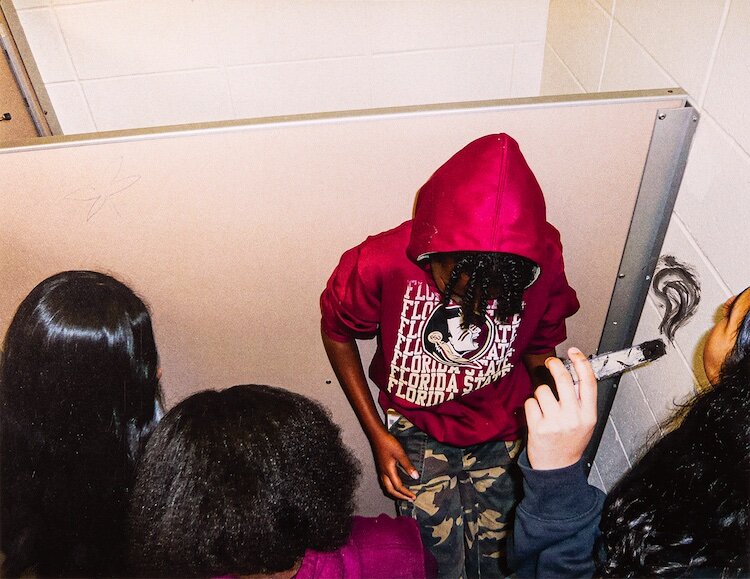
He and his staff have discussed the idea of closing some bathrooms to make it easier to monitor such activity. And although Alburtus says he doesn’t fault any school that does that, he has resisted doing it so that the majority of kids “are not punished for the poor decisions of a minority of us.”
Alburtus says that e-cigarettes and dab pens that are used to vaporize cannabis and tobacco, make it much easier for kids to smoke without being detected.
“Thirty years ago, if someone was smoking Marlboros in the bathroom, No. 1, the smell was unmistakable,” he says. “No. 2, they’re holding it in their hand. So me, as an assistant principal in 1997, I could smell a kid’s fingertips and smell the cigarette. So, if I had smoke in the bathroom and smokey-smelling fingers, (they’re) done. I could follow through with consequences.”
But he says now vapes that people are using instead of cigarettes provide very little lingering smell. “You could blow it on your shirt and no one can see it,” he says. “And they don’t smell like anything. They don’t leave a smell on your fingertips. So they’re just so much more difficult to detect.”
He says the same thing is true with smoking marijuana. Dab pens and gummies are how kids use marijuana or get high at school, he says. He blames adults for allowing kids to have access to those things.
“Kids didn’t make vapes,” he says. “We, as adults, made vapes to make money. So we specifically are making things to make money off kids and making school situations more complicated.”
Why do teens smoke?
Do young people tell doctors why they vape or use marijuana?
The Family Health Center’s Dr. Jackson says, “I’ll ask them and they say, ‘Sometimes it calms my nerves.’ Sometimes they’ll say, ‘I do it with my friends socially.” She says at other times, they say, “I don’t know. I just do.”
Jackson does drug chemical screenings on young people to learn if their behaviors are the result of drug use or if something organically is going on in their bodies. It is also done sometimes before certain medications are prescribed.
Asked how vaping or smoking marijuana affects kids in school, she says, “It’s harmful in the sense that you’re likely to get further and further behind in your studies because you’re not able to concentrate and that leads to more of a struggle in school.”
She says sometimes students have less interest in school and are less likely to want to finish school if it causes them to fall behind.
“Sometimes, we don’t think clearly so we say things to our classmates that we shouldn’t have,” Jackson says. “When you’re high, you’re not thinking clearly, just like when you’re drunk. So you’re more likely to say things or do things that you can’t take back, or that get you in trouble in the hallways or even in the classrooms. It’s very dangerous in that regard.”
Addressing the problem
Is there something that students think the schools should do to make sure they are not exposed to unwanted smoke?
“Schools should definitely do something about it,” says Evan Therkildsen, who attends Loy Norrix. “I don’t really know what. Maybe like (having) people coming into the bathrooms to check on what people are doing more often — because I know that they do that. But I think maybe more often.”
Alburtus says Portage Central High School has adult hall supervisors, about five retirees, parents, and others on any particular day, who routinely check bathrooms and hallways.
“It’s not that I think that stops it,” Alburtus says. “… The hope is, it makes a nice human being who is a student here think, ‘You know, I just think I’m not going to take a chance on that.’ Or, ‘I’ll wait until I get home to do that.’”

Asked if he thinks marijuana is harmful, Therkildsen says, “I think so. But I don’t think it’s as harmful as other things. It’s a gateway drug. I don’t think it’s too harmful. But I definitely think that it’s harmful in some way.”
How about vaping? He says, “I think vaping is more harmful. It’s obviously just hurting your lungs. And it’s more addicting than weed is. So you’re going to be on it for longer, probably. They just need to do better.”
Asked if marijuana kills your brain cells or causes long-term physical harm, Dr. Jackson says, “The science is still out on that.” There is a difference between what has been used in the past (the marijuana plant itself) versus what is being used now.”
She says, “Oftentimes it’s mixed with something else or laced with something else. So is it just the true leaf itself? The marijuana plant itself? Oftentimes it’s synthetic. So it has other oils in it. If they’re vaping, it has flavors in it. That’s where you kind of run into the harm now as well.”
She says young people should also keep in mind that their brains are still developing “and it has been shown to cause harm to the brain cells that are developing. You’re not done growing. You still go through another growth spurt, even into your early 20s. So we don’t want to do anything that’s going to potentially decrease what the full potential is of our brain usage.”
What do weed and vaping do to teen athletes?
“Most athletic ability is not just physical, it’s mental — up to 80 percent may be mental,” Dr. Jackson says. “If you’re high, you can’t really process what you’re supposed to be doing on the field, on the court, on the mat, whatever sport it is. Therefore, you’re not as clear or you’re not able to be as quick in your movements, which would put you at increased risk for injury. If you’re high, you’re not going to be as careful if you’re on the trampoline or on the balance beam. If you’re high, you’re not engaging with your teammates like you should be. Therefore, they can’t depend on you as a teammate.”
With vaping and smoking, she says an athlete is also more likely to have respiratory issues.
Why are kids smoking? Alburtus says he suspects it’s for the same reason kids did when he was in school.
“Jim, well he did it for fun,” he says of one of his high school friends. “But Ted and Steve, they did because they were treating their own anxieties, just like most people use alcohol to medicate themselves.”
Jackson says, “There always needs to be an open dialogue about why kids feel the need to turn to these substances.” She says adults should not simply tell kids not to do it. As adults, we have to offer alternatives and then also be an example. As adults, we shouldn’t be smoking and vaping and then telling adolescents not to do it.”

Anas Elkafrawy is a sophomore at Kalamazoo Central High School where he enjoys his fellow classmates and teachers. Anas likes to play video games, hang out with friends, and play soccer.
]
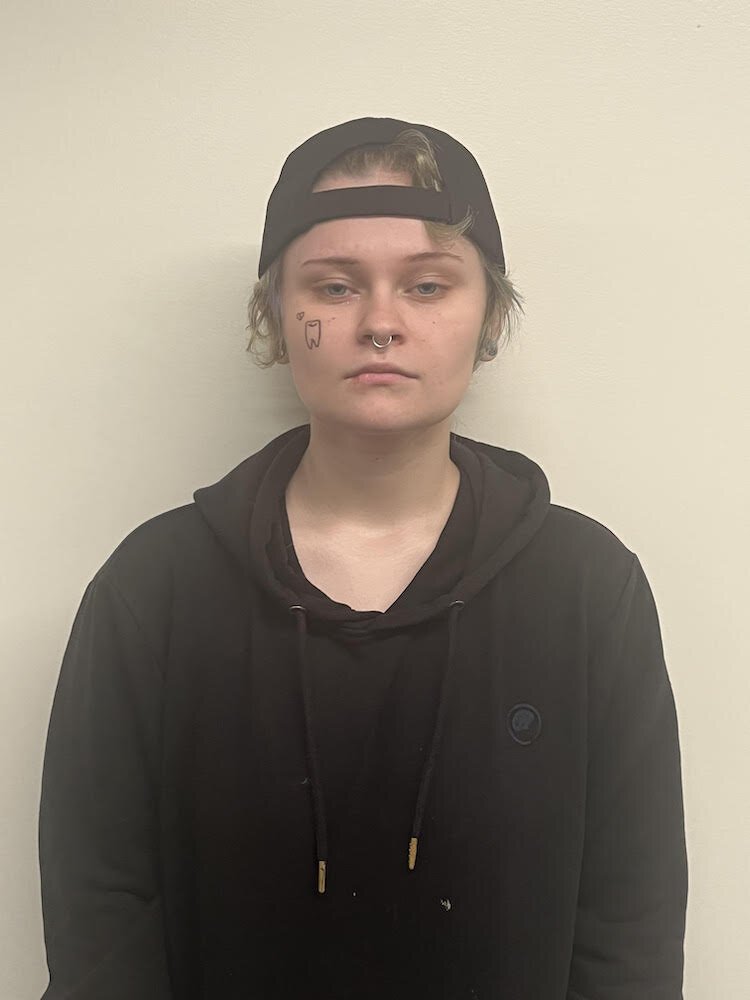
Gloria Geer (Gus) is 17 years old and attends Gull Lake Online as a senior. Gloria loves to make artwork and watch movies. One of their favorite films is “The Godfather Part Two.” Gloria wanted to be in Voices of Youth to make art for a purpose and heard about the program through a Kalamazoo Institute of the Arts class taught by Taylor Scamehorn, a VoY Art Mentor.
Artist Statement: I chose to represent the focus area of Teenage Vaping through mixed media. I asked my friends to pose in a bathroom at school to show that kids are actually out here vaping various substances on school grounds during school. The white blocks show that it is not always legal substances for minors to use.

Plamedie Ekumbaki is a 16-year-old sophomore at Loy Norrix High School. Her focus area is teen vaping and smoking, and she used mixed media photography to illustrate teen struggles and the reality of vaping and smoking in school and in friend groups.



